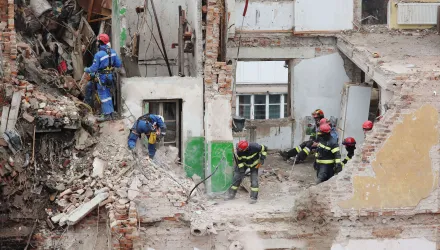
As diplomats, activists, and researchers converged on Vienna in June for the first meeting of states-parties to the Treaty on the Prohibition of Nuclear Weapons (TPNW), recent tragic world events highlighted how critical it was to convene this multilateral forum on nuclear disarmament.
Since February, Russia’s war against Ukraine has epitomized the grave dangers of a world where nine states possess approximately 12,700 nuclear weapons.1 That Russia could invade a sovereign state and indiscriminately target its civilian population, while using nuclear threats to deter NATO from intervening, has stunned the world. It offers a stark reminder that possessing nuclear arms can enable abhorrent violations of international law
Gibbons, Rebecca Davis and Stephen Herzog. "The First TPNW Meeting and the Future of the Nuclear Ban Treaty." Arms Control Today, Vol. 52, No. 7 (September 2022): 12–17.
The full text of this publication is available via Arms Control Today.






